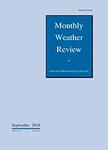版权所有:内蒙古大学图书馆 技术提供:维普资讯• 智图
内蒙古自治区呼和浩特市赛罕区大学西街235号 邮编: 010021

作者机构:NOAA Earth Syst Res Lab Div Phys Sci Mail Code R-PSD2325 Broadway Boulder CO 80305 USA SUNY Albany Dept Atmospher & Environm Sci Albany NY 12222 USA Univ Colorado NOAA Cooperat Inst Res Environm Sci Boulder CO 80309 USA NOAA Earth Syst Res Lab Boulder CO 80305 USA NOAA Sci & Technol Corp Earth Syst Res Lab Boulder CO 80305 USA Univ Calif San Diego Scripps Inst Oceanog La Jolla CA 92093 USA
出 版 物:《MONTHLY WEATHER REVIEW》 (天气月评)
年 卷 期:2016年第144卷第3期
页 面:1115-1144页
核心收录:
学科分类:07[理学] 070601[理学-气象学] 0706[理学-大气科学]
基 金:Directorate For Geosciences Div Atmospheric & Geospace Sciences Funding Source: National Science Foundation
主 题:Mesoscale processes Precipitation Orographic effects Atm/Ocean Structure/ Phenomena Dropsondes Physical Meteorology and Climatology Coastal meteorology Radars/Radar observations Observational techniques and algorithms Circulation/ Dynamics
摘 要:The wettest period during the CalWater-2014 winter field campaign occurred with a long-lived, intense atmospheric river (AR) that impacted California on 7-10 February. The AR was maintained in conjunction with the development and propagation of three successive mesoscale frontal waves. Based on Lagrangian trajectory analysis, moist air of tropical origin was tapped by the AR and was subsequently transported into California. Widespread heavy precipitation (200-400 mm) fell across the coastal mountain ranges northwest of San Francisco and across the northern Sierra Nevada, although only modest flooding ensued due to anomalously dry antecedent conditions. A NOAA G-IV aircraft flew through two of the frontal waves in the AR environment offshore during a ~24-h period. Parallel dropsonde curtains documented key three-dimensional thermodynamic and kinematic characteristics across the AR and the frontal waves prior to landfall. The AR characteristics varied, depending on the location of the cross section through the frontal waves. A newly implemented tail-mounted Doppler radar on the G-IV simultaneously captured coherent precipitation features. Along the coast, a 449-MHz wind profiler and collocated global positioning system (GPS) receiver documented prolonged AR conditions linked to the propagation of the three frontal waves and highlighted the orographic character of the coastal-mountain rainfall with the waves landfall. A vertically pointing S-PROF radar in the coastal mountains provided detailed information on the bulk microphysical characteristics of the rainfall. Farther inland, a pair of 915-MHz wind profilers and GPS receivers quantified the orographic precipitation forcing as the AR ascended the Sierra Nevada, and as the terrain-induced Sierra barrier jet ascended the northern terminus of California s Central Valley.